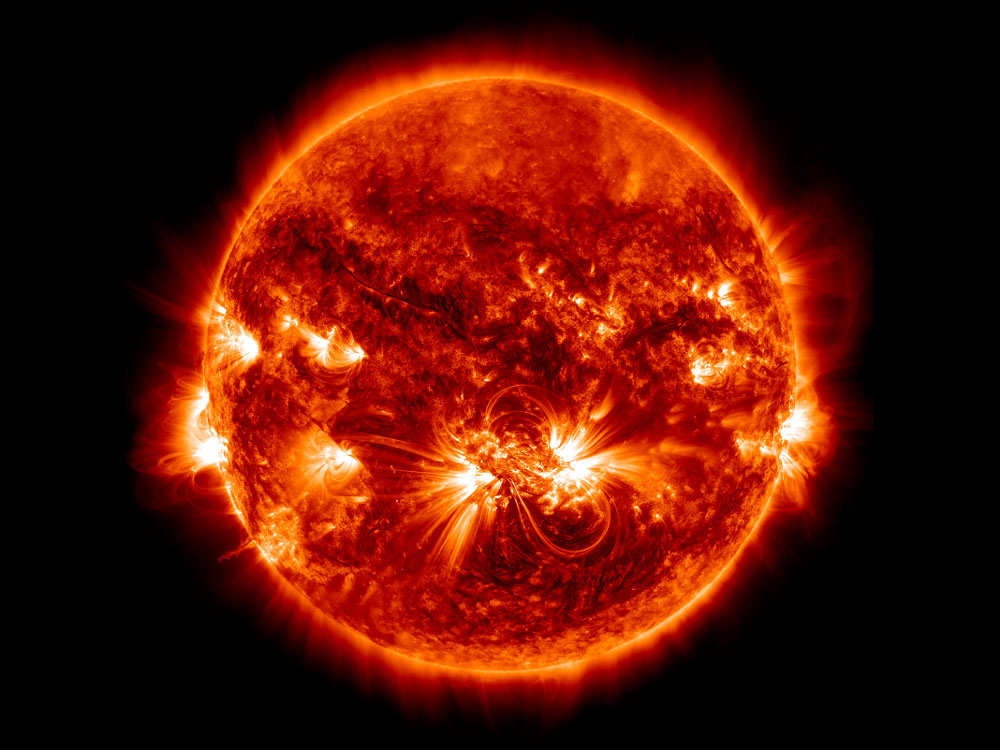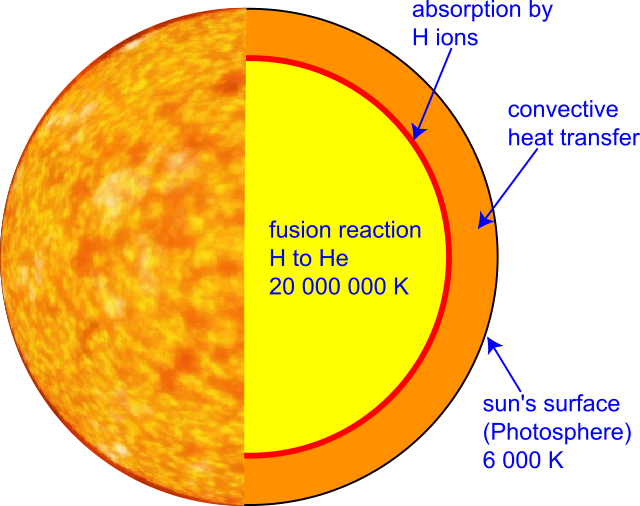THE SUN IS THE STAR AT THE CENTER of the Solar System. It is about five billion years old and will continue to shine as it does now for about another five billion years. The Sun is a yellow main sequence star about 1.4 million kilometers in diameter. It consist almost entirely of hydrogen and helium . In the Sun's core, hydrogen is converted to helium by nuclear fusion, releasing energy in the process. The energy travels from the core, through the radiation and convection zones, to the photo sphere (visible surface), where it leaves the Sun in the form of heat and light.
On the photo sphere there are often dark, relatively cool areas called sunspots, which usually appear in pairs or groups and are caused by the cooling effect if the magnetic field. Other types of solar activity are flares, which are usually associated with sunspots, and prominences. Flares are sudden discharge of high-energy radiation and atomic particles. Prominences are huge loops or filaments of gas extending into the solar atmosphere ; some last for hours, other for months. Beyond the photo sphere is the chromosphere (inner atmosphere) and the extremely rarified corona (outer atmosphere), which extends millions of kilometers into space. Tiny particles that escape from the corona give rise to the solar wind, which streams through space at hundreds of kilometers per second. The chromosphere and corona can be seen from Earth when the Sun is totally eclipsed by the Moon.


Comments
Post a Comment